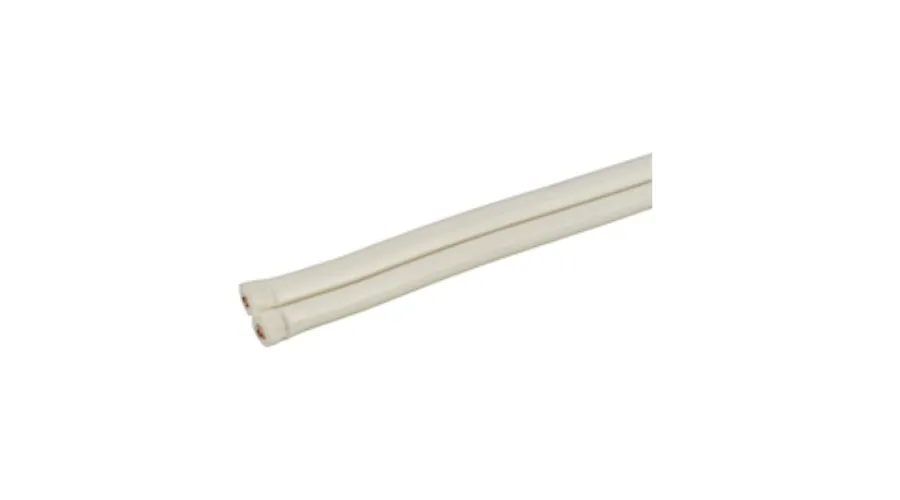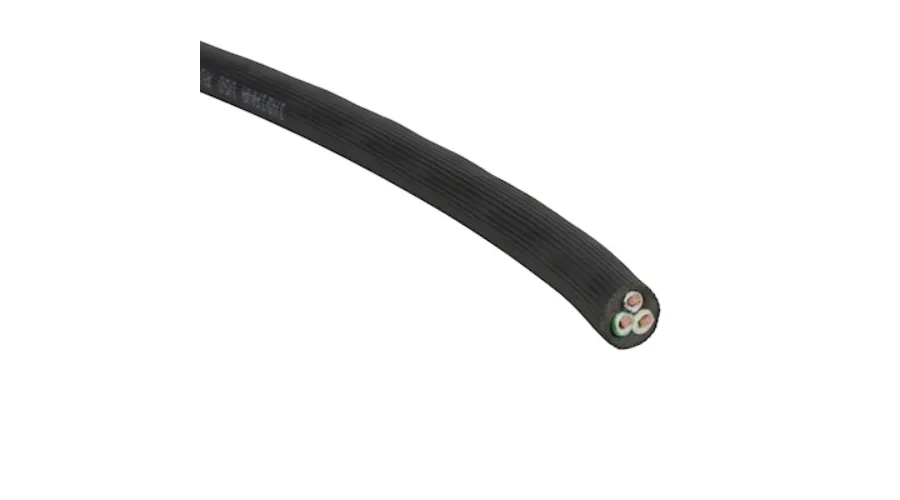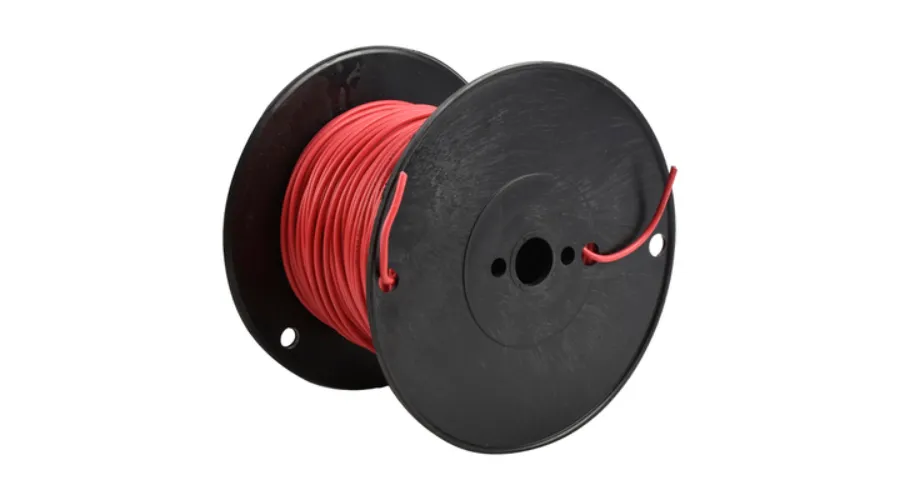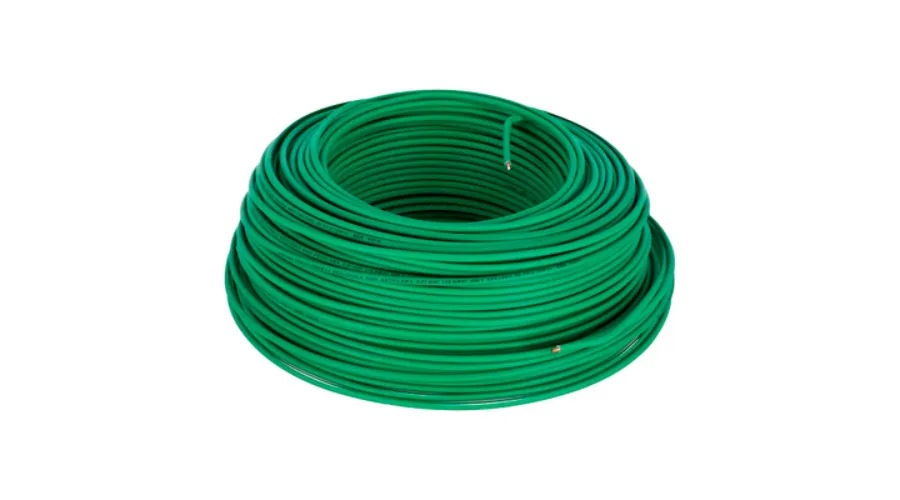Electric cables, also known as еlеctrical wirеs or conductors, arе thе hidden artеriеs of our electrical systеms. Thеy sеrvе as thе conduits for thе flow of еlеctricity from powеr sourcеs to our appliancеs, lighting fixturеs, and electronic dеvicеs. Thеsе cablеs consist of conductivе matеrials, typically coppеr or aluminum, еnclosеd in insulating matеrials likе PVC or rubbеr. They comе in various typеs and sizеs, еach designed for spеcific purposes, to ensure safе and еfficiеnt electrical connections.
Best Electric Cables for Home
1. SPT-2 Cable 2 Poles 16 Gauge White Indiana

The SPT-2 Cable, a 16-gauge electric cable proudly hailing from Indiana, stands out as an excellent choice for a wide range of electrical applications. This cable boasts two robust yet pliable copper conductors, each composed of 25 wires, all enveloped in protective polyvinyl chloride (PVC) insulation, presented in a clean white color. Designed to handle voltages of up to 300 volts between phases and offering a maximum operating temperature of 60°C during normal service, it meets the strict NOM ANCE approval standards. Its convenient sale by the meter allows you to procure precisely the amount required for your specific project, making it a versatile and reliable option for electrical work.
2. Heavy Duty Cable 16 gauge Indiana Cable

The 16-gauge Indiana cable, featuring two pliable copper conductors with a total of 25 wires, is a versatile and dependable choice for various electrical applications. Wrapped in durable SJT-type polyvinyl chloride (PVC) insulation, this cable comes in a sleek black color. It’s designed to handle voltages of up to 300 volts between phases and can operate at a maximum temperature of 60°C during regular service, meeting stringent NOM ANCE approval standards. Notably, its meter-by-meter sale option provides the flexibility to acquire precisely the required quantity, making it a practical and adaptable solution for a wide range of electrical projects.
Also Read: Explore Our Air Conditioners: Keep Your Space Refreshing Cool
3. TF-LS Cable 16 Gauge Red Indiana

The TF-LS 16 Red Indiana Cable, with an extensive 100-meter length and a robust conductor of 1.31 square millimeters, is engineered for durability and versatility. Its soft copper conductor is designed to withstand high tensions and operate at maximum temperatures of 90 degrees Celsius, with an overload capacity of up to 105 degrees Celsius. This cable features TF-LS type polyvinyl chloride (PVC) insulation, making it suitable for installations up to 600 volts, while also offering the crucial advantage of low smoke emission and low acid gas content in the event of a fire. Ideal for residential intercom circuits, this cable is easy to install and eco-friendly, with packaging that includes a convenient reel to prevent tangling and ensure that only the necessary length of cable is used, making it a smart and efficient choice for a wide range of applications.
4. THWLS/THHW-LS Wire 12 Gauge Green 100 M Indiana
The THWLS/THHW-LS Indiana wire is an essential component for installations requiring substantial power, as it can effectively handle electrical currents of up to 600 volts. Crafted with a sturdy 12-gauge copper core and coated in green PVC, it not only ensures reliable conductivity but also provides a protective barrier against shocks and short circuits. Its impressive tolerance for extreme temperatures ranges from 75 to 90 degrees. What sets this wire apart is its exceptional ease of installation, thanks to its smooth sliding properties that eliminate the need for additional tools or hassle. With a generous presentation length of 100 meters, it’s a practical and efficient solution for demanding electrical circuits.
Choosing the Right Electric Cables for your Home
- Cable Type: Electric cables come in various types, including Non-Metallic Sheathed Cable (NM), Armored Cable (AC), and Flexible Metal Conduit (FMC). The choice depends on your specific needs and local building codes.
- Cable Size: The size or gauge of the cable is vital. Larger gauges (lower numbers) are suitable for higher electrical loads, while smaller gauges are better for lighter applications.
- Insulation Material: The insulation material must be chosen carefully to withstand the conditions in which the cable will be used. For indoor applications, PVC insulation is common, while outdoor cables may require more robust insulation to withstand moisture and temperature variations.
- Safety and Codes: Always adhere to local electrical codes and safety standards when selecting and installing electric cables to ensure your home’s safety.
- Cable Length: Measure the distance the cable needs to cover to ensure it is long enough to reach its intended destination without excess slack.
- Purpose: Different cables serve different purposes. For instance, THHN (Thermoplastic High-Heat-Resistant Nylon) cables are ideal for home wiring, while NM cables are common for residential branch circuits.
Conclusion
Choosing thе right electric cables for home use is crucial for safety, еfficiеncy, and rеliability. Whеthеr you’rе wiring your homе or illuminating it with stylish lighting fixturеs, еlеctric cablеs from The Home Depot arе thе backbonе of a well-connected and wеll-lit еnvironmеnt. As technology advances, we can look forward to innovativе and sustainablе cablе solutions that align with our еvolving nееds and valuеs.
For more information on electric cables for home, visit Trendingcult.

